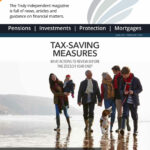If we could see into the future, there would be no need to diversify our investments. We could merely choose a date when we needed our money back, then select the investment that would provide the highest return to that date.
It might be a company share, or a bond, or gold, or any other kind of asset. the problem is that we do not have the gift of foresight. It’s a basic rule of investing that to improve your chance of a better return you have to accept more risk. But you can manage and improve the balance between risk and return by spreading your money across different investment types and sectors whose prices don’t necessarily move in the same direction – this is called diversifying.
Reducing the overall risk in your portfolio
Diversification can help you smooth out the returns while still achieving growth, and reduce the overall risk in your portfolio. It helps to address this uncertainty by combining a number of different investments. It can’t guarantee that your investments won’t suffer if there is a market correction, but it can improve the chances that you won’t lose as much as if you weren’t diversified.
In order to maximise the performance potential of a diversified portfolio, managers actively change the mix of assets they hold to reflect the prevailing market conditions. These changes can be made at a number of levels, including the overall asset mix, the target markets within each asset class, and the risk profile of underlying funds within markets.
Environment of positive or recovering economic growth
As a rule, an environment of positive or recovering economic growth and healthy risk appetite would be likely to prompt an increased weighting in equities and a lower exposure to bonds. within these baskets of assets, the manager might also move into more aggressive portfolios when markets are doing well and more cautious ones when conditions are more difficult. Geographical factors such as local economic growth, interest rates and the political background will also affect the weighting between markets within equities and bonds.
In the underlying portfolios, managers will normally adopt a more defensive position when risk appetite is low. for example, in equities they might have higher weightings in large companies operating in parts of the market that are less reliant on robust economic growth. Conversely, when risk appetite is abundant, underlying portfolios will tend to raise their exposure to more economically sensitive parts of the market and to smaller companies.
Knowledge is power
Investors face a number of risks over their lifetime, but longevity, sequencing and inflation risks are three key risks that are particularly pertinent to retirees. When looking at investments, it is important to bear these risks in mind.
- Longevity risk – the risk of outliving your investments
- Sequencing risk – the risk of market corrections (such as a global financial crisis) just before or after retiring, which is generally the point of maximum wealth
- Inflation risk – purchasing power of retirement income could reduce if there is not sufficient capital growth. This risk is gradual though and not a one-off like sequencing
- Market risk – the risk of general movement in financial markets over time. This risk can be reduced through portfolio diversification
- Behavioural bias risk – the risk that investors allow their emotions to drive investment decisions. For example, selling out of growth assets after a fall is often the worst thing to do. a long-term view of investing should be taken
Seek professional financial advice
For more information on your investments and diversification arrange a free consultation with one of our independent financial advisers here.





Follow us